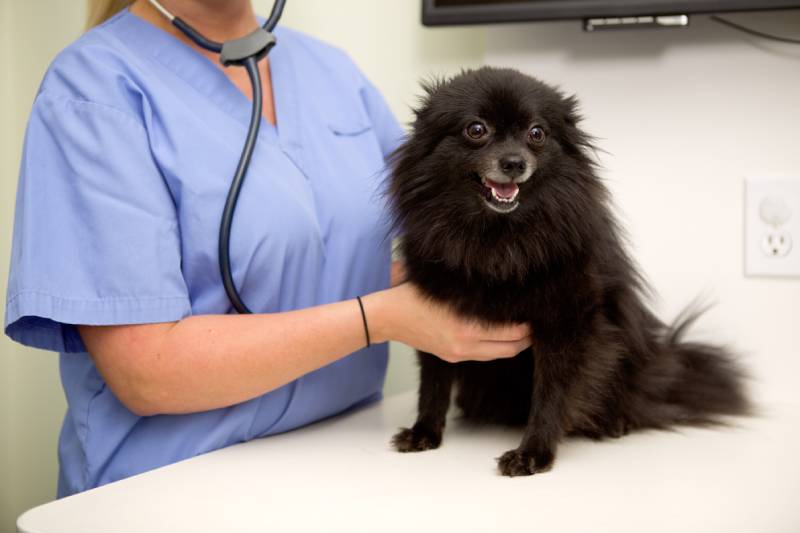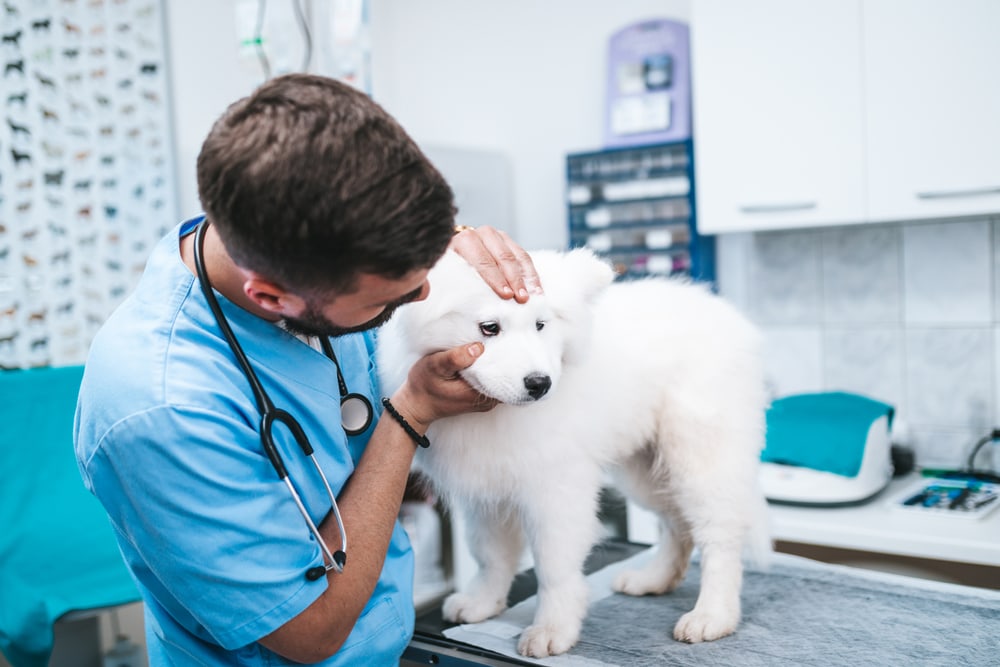Managing Luxating Patella in Dogs: Exercise & Rehab (Vet Answer)
Updated on
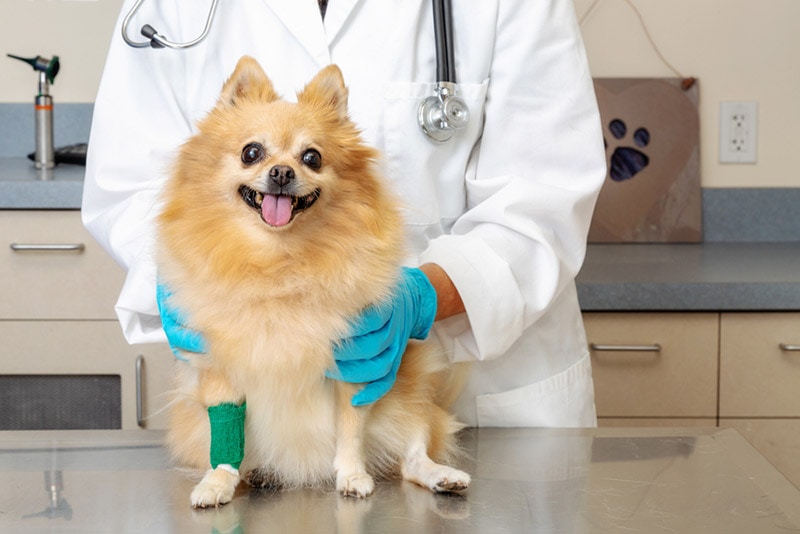
This question is for any dog, but especially owners of small-breed dogs. When your dog is running around, have you ever noticed them having an intermittent hop/skip while they run? If you have, your dog likely has something known as a luxating patella. We’ll go over what that means exactly, how it impacts your dog, and of course, everything you need to know about how to best help your pup.
What Is a Luxating Patella?
Patella is the medical term for the kneecap. The knee joint, in dogs, also known as the stifle joint, is made up of the end of the femur (thigh bone), the start of the tibia (shin bone), and supportive connective structures in the area like ligaments, think meniscus, ACL (called CCL in a dog).
The patella is embedded inside something called the patellar tendon. The quadriceps muscles, most of the thigh muscles at the front of the thigh, collect into a thick tendon that goes across the front of the knee joint to connect at the top and front of the tibia. The patella is a round, smooth piece of bone held inside this tendon, which protects the tendon as it goes over the joint. It’s held in place by resting inside something called the trochlear groove.
This trochlear groove is essentially two parallel ridges on the front end of the femur, and the tendon and patella run in the valley in between. For a luxating patella, the patella and tendon instead cross over the ridges of this groove, either medially, meaning towards the inside or midline of the body or laterally, meaning towards the outside or away from the body.
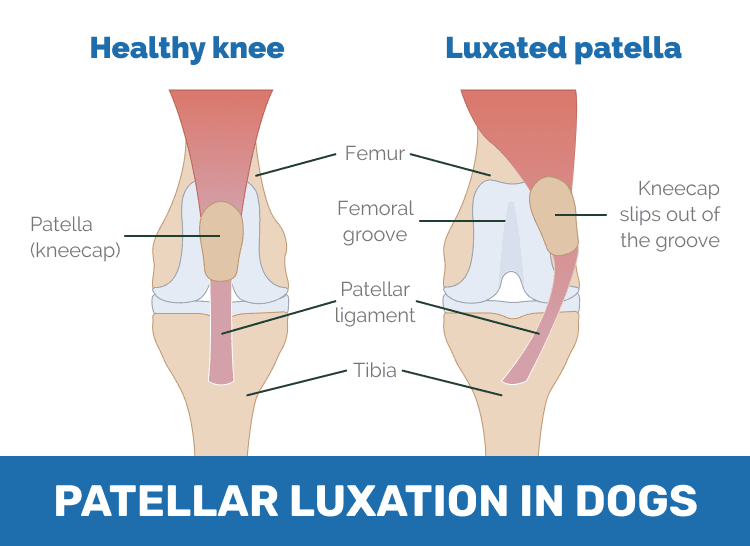
Grades of Patellar Luxation in Dogs
In a normal dog knee, when the hindlimb is fully extended, the patellar tendon is slightly loosened, and the patella sits within the trochlear groove. When the knee bends, this pulls the tendon tight and pulls the patella downwards, optimally straight down, keeping the tendon within the groove. As long as it moves straight up and down with each flex of the limb, all the structures stay where they should and are supported as they should be.
In a luxating patella, the tendon pulls either inwards or outwards, medially or laterally, out of the groove, which, while not necessarily painful, leads to inflammation and erosion of cartilage in the area and can cause pain, arthritis, structural changes, and trauma to other supportive structures in the area of the knee.
The severity of the patella luxation informs how likely these other consequences are.
- Grade 1: The patella lives within the trochlear groove in its normal position but can be pushed out of the groove. When released, it immediately returns to its normal position.
- Grade 2: The patella pops in and out of place on its own when the knee is flexed and extended without having to be pushed but is still returning to its normal position on its own and stays there when the joint is extended as the dog stands.
- Grade 3: The patella rests outside the trochlear groove, out of position, but can be pushed back into position. When released, it returns out of the groove.
- Grade 4: The patella rests outside the trochlear groove and cannot be pushed back into place regardless of how the limb is positioned.
What Are the Signs of a Luxating Patella in Dogs?
Most cases of luxating patellas will occur in small-breed dogs, though any breed can be affected. Dog owners will often notice that their dog seems to skip in their back end when running, sometimes or consistently, as the first sign of Grade 1 or 2 patellar luxation. If the patella stays out of place for a few steps, you may also notice them holding a hindlimb up while walking or running for a few steps before returning to using it.
While often not painful, for higher grade patellar luxations, patellar luxations caused by trauma, lateral patellar luxations, or progressed cases that now have problems like arthritis or structural changes to the knee, discomfort in that knee may be seen. This can look like lameness, crying out, hesitancy to jump, a stiff gait, a hunched or crouched body position, or even legs bowed inward or outward.
Patellar luxations can affect one knee, so signs may be seen in one or both hindlimbs.
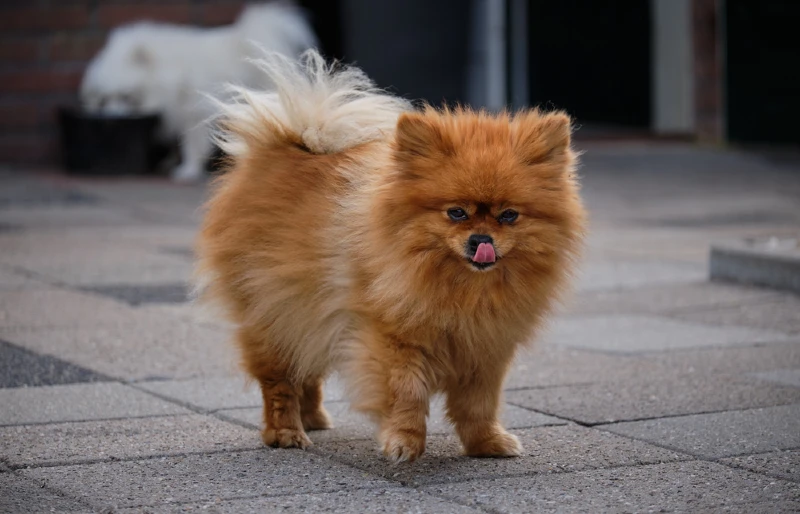
What Are the Causes of a Luxating Patella in Dogs?
The most common type of patella luxation is medial, and most medial luxating patellas are caused by genetics and are seen in small-breed dogs. These dogs may have a loose tendon, a shallow groove, a rotated groove or bone, or other abnormalities.
Luxating patellas can also be caused by trauma and are a potential complication that may arise after other knee surgeries, in addition to accidental traumas such as falls or vehicle collisions.
Lateral patellar luxations can occur in any dog breed also but are more common in medium to large-breed dogs and more likely to occur in older dogs, while medial patellar luxations are usually found in young animals. Lateral patellar luxations are more likely to be painful or cause structural and gait changes than medial patellar luxations.
How Is a Luxating Patella Diagnosed in Dogs?
In most cases, a luxating patella can be diagnosed by a physical exam by a veterinarian. By watching a dog walk and run and manipulating the patella, they can check and grade any potential patellar luxations.
In some cases, it may be necessary to take X-rays of the knee joints for confirmation. This is especially useful for ruling out any other reasons the patella might luxate, such as damaged ligaments in the area, bone cancers, or breaks, so nothing is missed.
For situations that may need surgical correction, a CT scan of the knee may be taken to assess all the structures of the knee in detail.
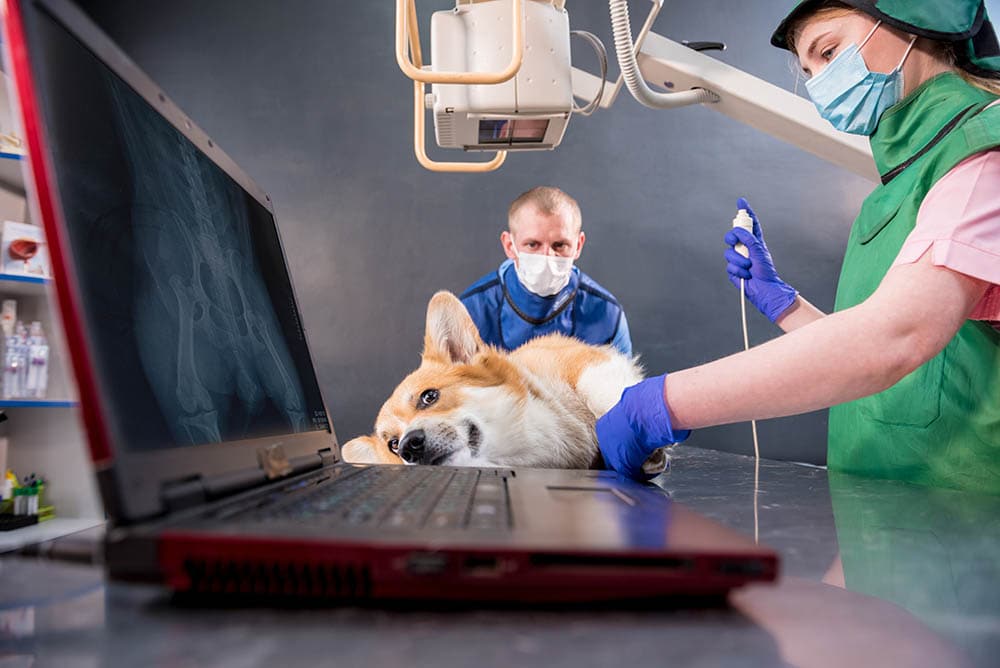
 How Is a Luxating Patella Treated in Dogs?
How Is a Luxating Patella Treated in Dogs?
There are many forms of treatment for luxating patellas in dogs, and which options are best depends on the grade of the patella luxation.
All patella luxations of any grade predispose that dog to osteoarthritis, so for all dogs with a patella luxation, supportive treatment for their joints is recommended. This generally looks like joint supplements, weight control, and regular exercise.
Grade 3 and 4 patellar luxations, or any patellar luxations that cause pain, are candidates for surgical correction. This does depend on the individual dog and should always be discussed with your veterinarian, but this may be the best intervention for these cases.
There are several surgical options for the treatment of luxating patellas in dogs, and it isn’t uncommon to combine surgical methods based on the case. Some of the basic options are:
Imbrication/Desmotomy
This soft tissue correction technique consists of pulling tight against one side of the patellar tendon while loosening or freeing the other to pull the patellar tendon in the direction wanted to keep it inside the trochlear groove.
Trochleoplasty
These are various procedures that aim to change the trochlear groove to keep the patellar tendon within the groove. This can consist of deepening the valley between the ridges, elevating the ridge of the groove on the side the luxation occurs on, or even raising both sides.
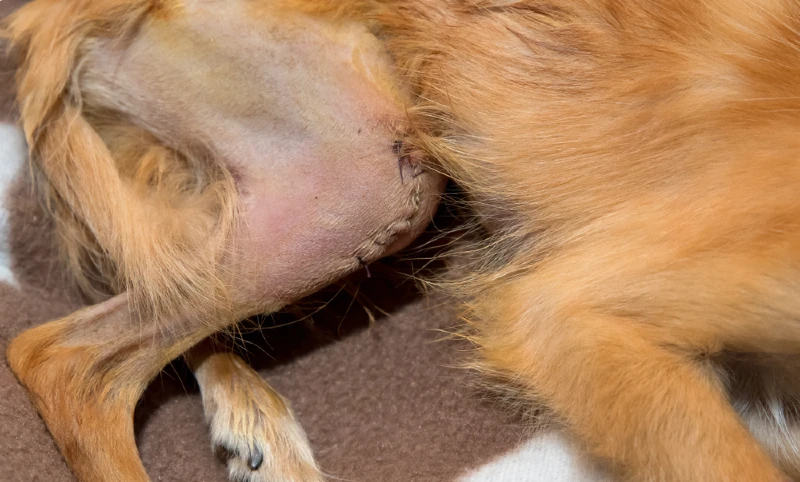
Tibial Tuberosity Transposition
The end of the patellar tendon attaches at the front and top of the tibia on a bony crest. With this surgical procedure, the surgeon detaches this attachment and moves the tendon insertion in one direction or the other to pull the tendon away from the direction it was luxating, to help it stay within the groove during movement.
Osteotomies
In severe cases, due to significant abnormalities between the femur and the tibia, cutting and rotating parts of the femur or tibia to create the correct angles for the patella tendon to move straight up and down may be required.
Implants
In newer techniques, it is possible to place a metal implant to raise the edge of the trochlear groove rather than carving into the bone or moving pieces around, which helps preserve the cartilage in the joint for potentially better outcomes.
How Do I Care for a Dog With a Luxating Patella?
If your dog has been diagnosed with a luxating patella of any grade, the first step of care is discussing joint supplements with your veterinarian. Most commonly, the supplements to pick and choose from depending on the dog are:
- Glucosamine/chondroitin
- MSM
- Green-lipped mussel extract
- Fish oil (omega-3 fatty acids)
- CBD

The next step is weight control. Progression of the luxation and associated arthritis is slowed in dogs with a lean body condition. You can speak to your veterinarian about the best and safest way to reduce or change your dog’s diet if needed, as they can advise on safe caloric restrictions and weight loss diets.
For dogs with a patella luxation, with or without surgical correction, there are some other ways you may want to support them. These can be:
- Underwater treadmill therapy
- Rehab and physical therapy with a specialist (or potentially at home)
- Acupuncture and massage
- Laser therapy
- PEMF therapy (pulsed electromagnetic field therapy)
To care for a dog at home after a patella luxation corrective surgery, you will need to follow the guidelines given by the surgeon. In most cases, recovery will take about 6–8 weeks, will start with a period of strict rest, and then will have a schedule for reintroducing movement and exercise to the joint, which may include some at-home exercises such as passive range of motion exercises that you can do to keep the joint from stiffening.
It is important that your dog’s e-collar and strict rest recommendations are followed exactly, as deviations are likely to result in failure of the surgery and additional corrective procedures.
Frequently Asked Questions
Does my dog with a luxating patella need surgery?
Only sometimes. Grade 3 and 4 patella luxations usually benefit from surgery, but others can be managed with supportive care in many cases.
Can a dog live with luxating patellas?
Yes, definitely. This isn’t a fatal condition, but instead a common orthopedic condition, usually of small dogs, that has numerous treatment options.
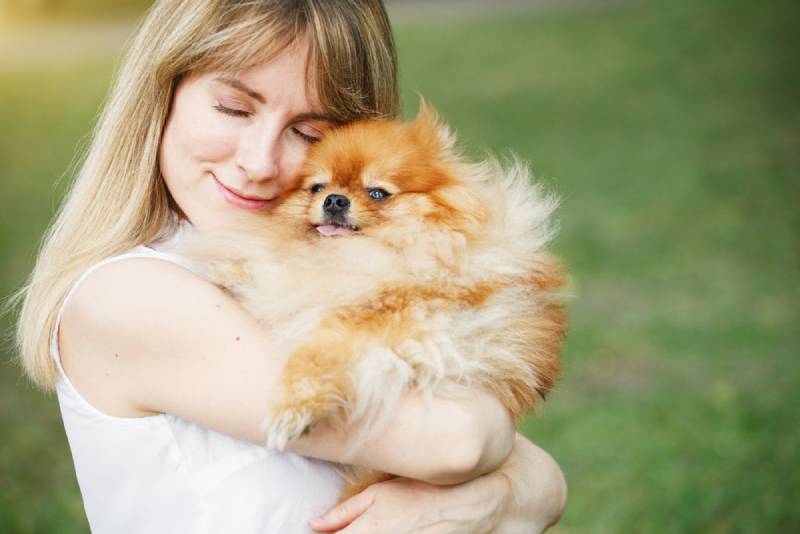
Do patella luxations in dogs hurt?
Surprisingly, the knee cap popping in and out of place is rarely painful. Pain with the condition is usually something that comes later due to arthritis that forms in the joint or, in severe cases, where the out-of-place knee cap keeps the joint from bending normally and comfortably.
Is it safe to exercise dogs with luxating patellas?
Yes, in fact keeping all the supportive structures of the knee mobile and strong can help keep the joint comfortable. While high-impact, high-intensity exercise isn’t usually recommended, walks and swimming are highly encouraged. Passive range of motion exercises can be helpful too, which a veterinarian, especially a rehab veterinarian, can help you with.
Conclusion
Patella luxations are among the most common orthopedic findings in dogs at the veterinary clinic, especially for small-breed dogs. In most cases, some attention to joint care and weight control are enough to keep these dogs moving comfortably throughout their lifetime, but some cases do benefit from surgery.
Medial patellar luxations are more common than lateral and are more likely to be mild, while lateral patellar luxations are more common in older or larger dogs and are more likely to need surgical intervention. If you suspect your dog has a patellar luxation or would like to have them screened to rule it out, speak to your veterinarian about having this checked.
Featured Image Credit: GoodFocused, Shutterstock




